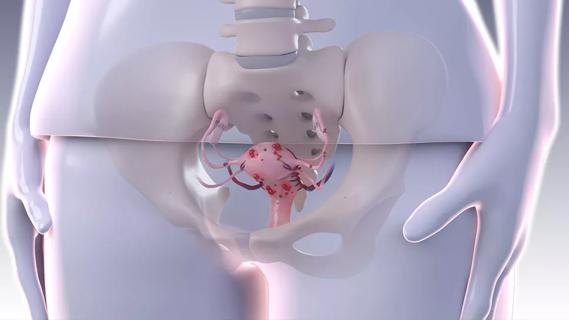Advertisement
Participants have healthier babies, fewer preterm births

The U.S. has one of the highest rates of infant mortality in the industrialized world — 5.8 deaths for every 1,000 live births. Compare that to Japan, which has one of the lowest rates, at 2.0.
Advertisement
Cleveland Clinic is a non-profit academic medical center. Advertising on our site helps support our mission. We do not endorse non-Cleveland Clinic products or services. Policy
In Cleveland, Ohio, infant mortality is even worse: 12.9, according to one report. And for the city’s black population, it’s a whopping 16.0 out of every 1,000 babies.
“That is heart-wrenching,” says Sue Hudson, MSN, CNM, Director of Midwifery Services in Cleveland Clinic’s western region. “The most common cause of infant deaths, by far, is prematurity.”
To help reduce these staggering statistics, Cleveland Clinic has begun hosting two nationwide Centering® programs, CenteringPregnancy and CenteringParenting. Studies show that “Centering” moms have healthier babies and fewer preterm births.
Both programs offer a series of 10 shared medical appointments with a physician or nurse midwife and up to 12 mothers at similar stages of pregnancy or parenting. Sessions include individual exams as well as group discussions about everything from swaddling to smoking cessation.
Hudson introduced CenteringPregnancy at Cleveland Clinic after witnessing its effect at the small community hospital where she used to work.
“In one group of moms, we had a 15-year-old, a PhD, a recovering narcotics addict and a Mennonite,” says Hudson. “Within weeks, these women that at first had nothing in common besides pregnancy grew so close that they shared everything. They continued to get together after their babies were born.”
CenteringPregnancy breaks down barriers to help women — of all ages, races and socioeconomic levels — support and encourage each other’s healthy pregnancies, she says.
Cleveland Clinic began offering CenteringPregnancy, facilitated by Hudson, at one location in 2016. Now the health system has nine groups running concurrently across Greater Cleveland.
At each session, a trained Centering facilitator (a Cleveland Clinic midwife, physician or other provider) conducts a private exam with each mom. Then moms and facilitators “circle up” for discussion, partly guided by curriculum and partly driven by the group.
“Every mom can hear what others are thinking about or working through,” says Hudson. “And every mom gets all the information she needs about things like nutrition, stress management and sleep health.”
Sessions run approximately two hours and replace the standard 20-minute prenatal visits. That’s ten times more time with a caregiver. (Insurance providers reimburse for Centering sessions the same as regular visits.)
But the real value is in the interaction between moms. Rather than listening to information from a physician or nurse, participants help guide each other.
“First-time moms learn from experienced moms as much as they learn from us,” says Hudson. “That builds community and trust, which some women don’t have otherwise.”
As a follow-up to CenteringPregnancy, CenteringParenting allows families to continue their journey through the first two years of their baby’s life. These 10 sessions typically last two to two-and-a-half hours.
Advertisement
“We do everything we would do in traditional well-child health assessments, including developmental screenings and vaccinations,” says Cleveland Clinic Children’s pediatrician Raj Rambhatla, MD. “After individual assessments, families have time to participate in discussions facilitated by Centering providers on various topics including attachment, safe sleep, breastfeeding, nutrition, early literacy, development and safety. It’s a very relaxed atmosphere, so providers and patients don’t feel rushed. The group fosters a safe and supportive environment to ask questions and create lifelong bonds between families.”
Cleveland Clinic Children’s first CenteringParenting group began in March at Cleveland Clinic Stephanie Tubbs Jones Health Center. Attendees of this pilot program receive incentives at each session, such as sleep sacks and baby utensils, and will receive a convertible car seat upon completion.
“Centering programs’ attrition rate is very low even in locations that don’t offer incentives,” says Hudson. “Every mom I’ve talked to that has gone through a Centering program says she would do it again.”
More CenteringParenting groups are being planned at other Cleveland Clinic locations.
Families aren’t the only ones who benefit from Centering programs. So do providers.
“Patients view me as one of their peers, which builds trust and helps them communicate with me more comfortably,” says Hudson. “Plus, if I can see 10 women in the same time it would take me to conduct six regular visits, that’s a win.”
Outcomes for Centering moms and babies tend to be excellent. Out of 140 families that have completed CenteringPregnancy through Cleveland Clinic, only three babies have been born preterm and only one with a low birth weight (under 5 lb. 8 oz.). Out of the same 140 moms, 117 continued to breastfeed after returning home from the hospital with their baby.
“That rate is amazingly high,” says Hudson. “I’d like to see Centering become the standard of care for all pregnant mothers and babies.”
She’d also like to see a reduction in Cleveland’s infant mortality rate as new Centering groups begin in predominantly black communities, such as at Stephanie Tubbs Jones Health Center and Cleveland Clinic South Pointe Hospital on Cleveland’s East Side.
“I can’t wait to meet some of these families who may not have even attempted to access healthcare before,” she says. “I want to see great outcomes for them.”
Cleveland Clinic is just one of hundreds of healthcare practices across the U.S. offering Centering programs. Reaching approximately 60,000 patients per year, Centering is a step toward reducing preterm births and diminishing infant mortality in our country.
Advertisement
Advertisement

Newer drugs can affect likelihood of pregnancy

VMS in menopausal women can lead to adverse health outcomes

Surgical video highlights techniques for optimizing myomectomy

Blood test along with ultrasound is beneficial for twin pregnancies

Trial examines novel approach for a disease with a high mortality rate

New guidelines let the patients steer the process

Comparing strategies for cesarean prophylaxis with penicillin allergy

Counseling and careful surgical considerations are key